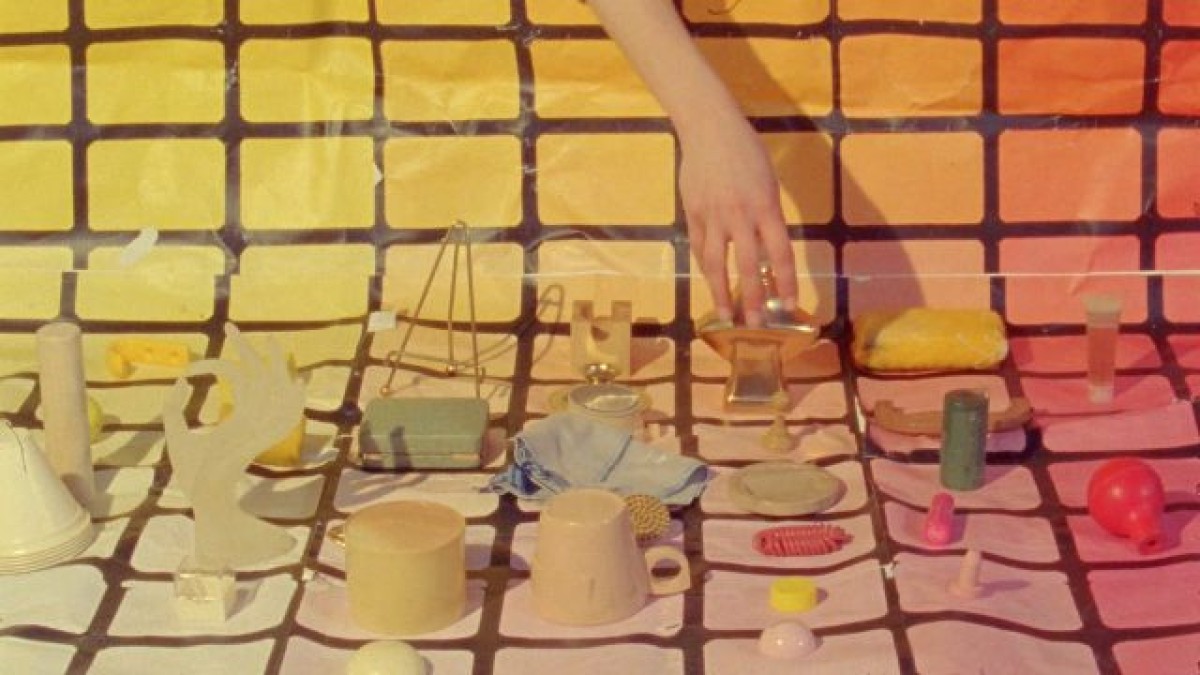In the Rose Gold spotlight

Still from Sara Cwynar, Rose Gold, 2017, 16 mm film on video with sound, 8 min, courtesy Foxy Production
Participating in an international biennale and having your first U.S. solo exhibition is no small matter for an artist. Later this month, Canadian artist Sara Cwynar heads to the Minneapolis Institute of Art (Mia) for her exhibition, Sara Cwynar: Image Model Muse, and to Brazil for the 33rd São Paulo Biennale.
Recently, Cwynar was artist in residence at the AGO. The AGO’s Artist-in-Residence program, the first of its kind at a Canadian art museum, is supported by the RBC Foundation’s Emerging Artists Project. We sat down with Cwynar in the spring to chat about her residency and her upcoming projects.
AGO: Tell us about your film Rose Gold?
Cwynar: In Rose Gold, I took the rose gold iPhone as a starting point and used it to discuss the relationship between colour, technology and consumer objects. The film features two voices, one male and one female, offering observations about consumer desire, the emotional effect of colour and the study of signs and symbols in advertising.
AGO: What are you working on now?
Cwynar: During my residency, I began working on a film that jumps between a makeup factory, a dance studio and my own studio. It looks at the hidden meaning of colour and how it’s produced and standardized in industry versus how it’s used by real people. This project is a sequel to Rose Gold and explores broad themes of feminism and consumerism; it will be screened at the São Paulo Biennale this month.
AGO: What role does colour play in your work?
Cwynar: I’m thinking about how colour contains meaning and history. For instance, how a mustard-yellow reads as 1970s. I’ll shift between colours that feel contemporary and colours that feel more dated.
AGO: You shot part of your new project at the AGO in front of the Rubens painting, The Massacre of the Innocents. What drew you to this painting?
Cwynar: The film is about colour and the colour is so spectacular in that canvas. Because the painting is so violent and dramatic, it feels like it’s all about bodies being disposable, which touches on some of the film’s feminist themes about how bodies are valued and looked at in our culture.
AGO: What did you enjoy most about your residency at the AGO?
Cwynar: I really enjoyed the collaborative aspect. I worked with many different people, including Johnson Ngo, the AGO’s Project Coordinator, Special Programs & Residences who helped me bring ideas to life, and Bojana Stancic, the AGO’s Programmer, Cross-Disciplinary Projects, who helped me find the right choreographer for the film.
And while Cwynar is heading to Minneapolis and São Paulo, one of her works will stay closer to home. The AGO has acquired Rose Gold, with funds donated by Donna G. Billes and Diana Billes, adding an exciting contemporary work to our Collection.
Are you an AGOinsider yet? If not, sign up to have stories like these delivered straight to your inbox every week.
Signature Partner
Signature Partner


